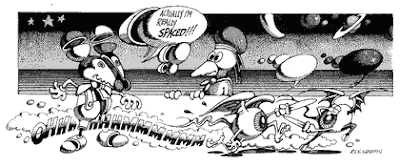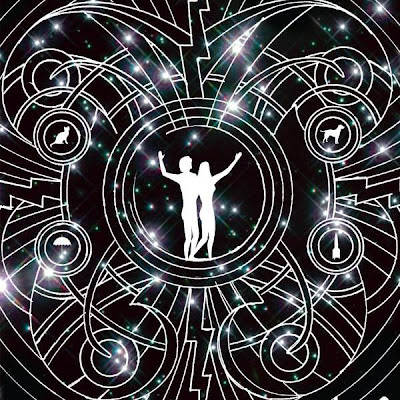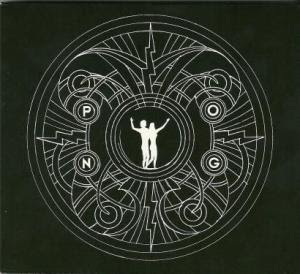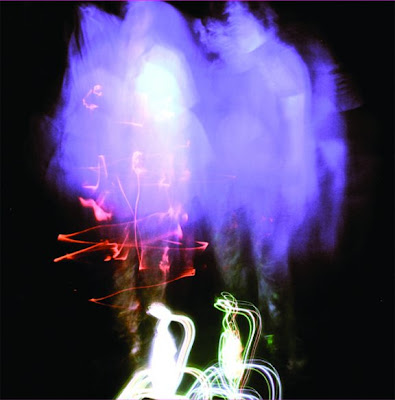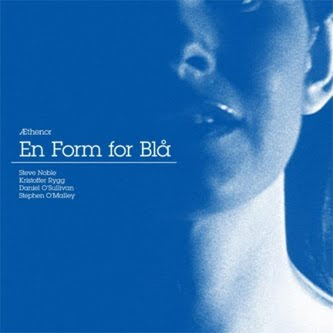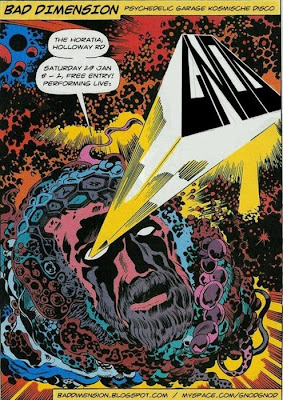no. 91 Watchmen
1986-1987
Alan Moore and Dave Gibbons
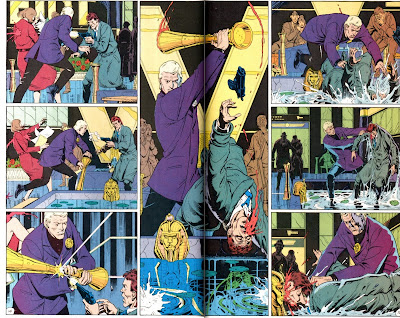
TCJ pull quote: "In narrowed circles, Watchmen will be dismissed for merely being the fare-thee-well vision of superheroes. True, the 1986 tale is indebted to genre conventions, but it additionally refurbishes devices from science fiction and the mystery novel, specifically the 'murder at the club' sub-species. Here, however, the cast of indelibly delineated members just happens to wear masks. With this, the psychological implications of dress-up heroism are acknowledged, examined, and then folded into richer, more complex patterns of human behavior than covered in any crime fighter's handbook." (Rich Kreiner)
Headspace sez: "Uh, it's Watchmen... Believe the hype! I won't say that it should have been in the Top 10 of TCJ's list, but this ranking is a travesty. The first significant, successful attempt at a literate mainstream (DC) comic series. A huge factor in the next decade of the mainstream: grim 'n' gritty angst, the existence of DC's Vertigo line, indirectly Image Comics, Alan Moore's ubiquity. Plus you have the actual content of the work itself. It's just plain better than #91."
no. 92 "Pictopia"
1986
Alan Moore, Don Simpson, et al
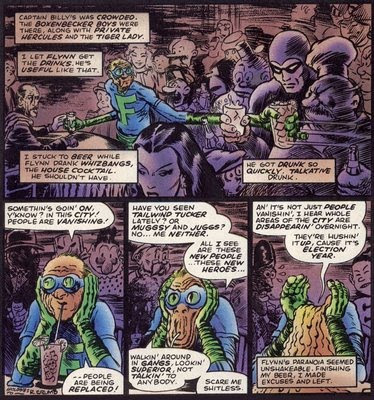
TCJ pull quote: "But writer Moore and artist Don Simpson would critique society's sanctioned heartlessness using brutal superheroes as a metaphor. Along the way, they would raise a lament to the demise of comics themselves, both as a social institution and as a valued industry. That's a lot to pack into a 13-page story, one of the shorter works in this list of 100. Moore, a clever student of comics' history and already a jaded hand in the field, was at his most trenchantly concise and riding high dudgeon." (Rich Kreiner)
Headspace sez: "Pretty surprising to have a 1986 Alan Moore work that I'd never actually heard of, much less seen myself. Uhhh... Quick, look over there!! Indeed heavy. I like the Little Nemo homage in the beginning, and I detect a bit of an influence on Who Framed Roger Rabbit?, two years later (1988)."
no. 93 Dennis the Menace
1951-1994
Hank Ketcham

TCJ pull quote: "Dennis began as a fairly conventional gag panel but in a short time both the humor and drawing attained a remarkable level of sophistication. (Surely the early widespread popularity of the winsome five-year-old rapscallion and his exasperated but infinitely patient nuclear family had much to do with its timing at the height of the post-War baby boom.)" (Gary Groth)
Headspace sez: "Just goes to show how much marketing and merchandising can have an effect. I can't help but think of the tv series, refrigerator magnets, 365-Dennis flip-calendars, and probably movies and other swag. I can understand considering Dennis the Menace superior to, say, Family Circus. But I still think of it in the same category: formulaic gag strips with easy, repetitive humor that gets old pretty quick."
no. 94 The Humor Comics of Basil Wolverton
1942-1973
Basil Wolverton

TCJ pull quote: "No one working in such a 'cartoony' style ever achieved that same sense of real-life possibility - that one of Wolverton's deformed-to-abstraction critters could be in the same room, sweating, grinning innocently, and looking up at you... Basil Wolverton's art and approach to comics remains influential today... a launching pad for many of the wilder forays of the underground generation's work, and all comics holding to that tradition." (Tom Spurgeon)
Headspace sez: "The name rings a bell, but it's that kind of name. I like that his art appeared in Lil' Abner ('40s), Kurtzman-era Mad ('50s) and DC's humor title Plop! ('70s). What, Not Brand Echh wasn't hiring?!"
no. 95 Los Tejanos
1982
Jack Jackson

TCJ pull quote: "Los Tejanos is the story of the Texas-Mexican conflict between approximately 1835-1875. Jackson's view of the conflict is seen through the eyes of the tejano (literally Texan of Mexican as distinct from anglo heritage) Juan Seguin... Seguin is a pivotal and tragic figure who, due to inexorable political circumstances and innate nationalistic prejudices, was considered suspect to the anglo Texans and, ultimately, a traitor from the Mexican point of view." (Gary Groth)
Headspace sez: "Sorta reminds me of Chester Brown's Louis Riel (1999-2003), which I dug big-time and which obviously came later - in the following century. Except about crazy early Texans, rather than crazy early Canadians."
no. 96 Dirty Plotte
1990-"Present"
Julie Doucet
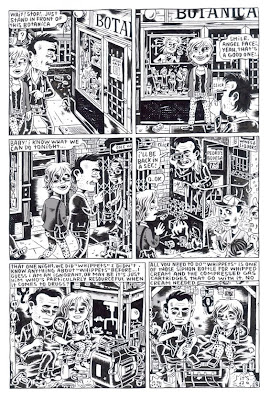
TCJ pull quote: "With 'My New York Diary' in the tenth through 12th issues of Dirty Plotte, Doucet came into her own for the first time. The story of a woman adrift in a new city while caught in a relationship gone not dreadfully but pitiably wrong is evocative and genuinely moving while at the same time it maintains the artist's distinctive visual look, albeit toned down a notch." (Bart Beaty)
Headspace sez: "Personal accounts of urban depravity were a-dime-a-dozen in the grungey '90s small press, but I really like Doucet's art style. It could even make me enjoy the stories, and she seem more likeable and fun-loving than purely self-debasing. More pages at the link above..."
no. 97 "The Hannah Story"
1994
Carol Tyler

TCJ pull quote: "Tyler's 12-page 'The Hannah Story,' about the early death of her sister Ann, and the circumstances that finally enable her mother Hannah to confront this bottomless sorrow, avoids all these pitfalls and emerges as perhaps the saddes and certainly most beautiful of the '90s 'autobiographical' comics." (Kim Thompson)
Headspace sez: "Unfamiliar with this one, but I was never big into the '90s wave of autobiographical comics (and there were soooo many). Not too keen on the art style myself."
no. 98 Barney Google
1919-1942
Billy DeBeck
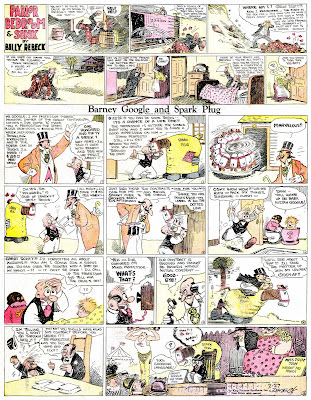
TCJ pull quote: "Initially, the strip was merely another ne'er-do-well husband and overbearing wife domestic comedy, but on July 17, 1922, creator Billy DeBeck changed all that: Barney acquired a race horse named Spark Plug, and the sad-faced nag, most of whose anatomy is hidden underneath a moth-eaten, shroud-like, horse blanket, became the Snoopy of the roaring '20s. Barney entered the horse in a race, and DeBeck quickly discovered the potency of a continuing story for captivating readers..." (R.C. Harvey)
Headspace sez: "When she was a young girl, my grandmother's father won a Shetland Pony while gambling - and he named it Spark Plug. Personally, I mainly remember Snuffy Smith (Barney's hillbilly cousin introduced in 1934), who always seemed a racist caraciture of white country people."
no. 99 The Bungle Family
1924-1945
Harry Tuthill

TCJ pull quote: "Tuthill's grubby, uningratiating drawing style and the verbose density of balloon prose hardly make a good first impression. Tuthill's genius was as a writer able to put over one of the darkest visions of American life this side of Nathaniel Webster. The lower middle-class Bungles, George and Josephine, have no more charm than the style they're drawn in: they are petty, mean-spirited, with no self-awareness, constantly bickering and back-biting among themselves as well as their neighbors and landlords." (Art Spiegelman)
Headspace sez: "I'd never heard of this strip before this article, and I've never heard of it elsewhere either. You can find more examples on this page. Seems like a whole lot of bickering..."
no. 100 Prince Valiant
1937-1971
Harold Foster
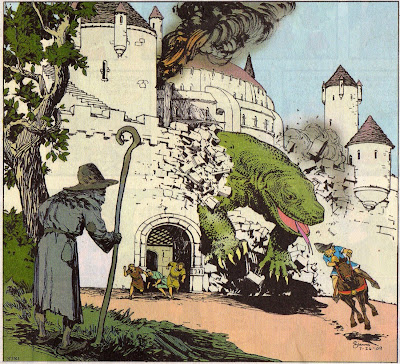
TCJ pull quote: "A superb draughtsman and a master of complex composition, his work is never formulaic: whether drawing a wistful maiden lost in thought on a parapet, or rendering a warrior manning a catapult on a chaotic battlefield, each is always depicted as an individual possessing distinct characteristics of dress, physical appearance, and expression. His charming and earthy rendering of everyday domestic life also balances the more romantic elements." (Greg Cwiklik)
Headspace sez: "As a kid occasionally reading the Sunday funnies, Prince Valiant always struck me as alien as Mary Worth or Steve Roper. Something you had to follow every day, through each week. But I would still check it out, because it looked and felt much, much cooler to a little boy."





